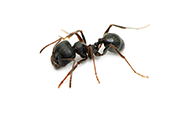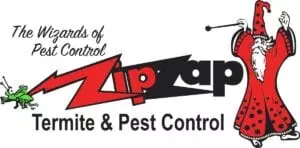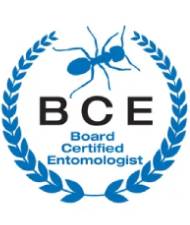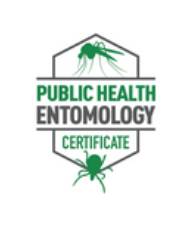Ant Issues and Control in Kansas City
Ant Control in Kansas City: Carpenter ant, Little black ant, Odorous house ant, Pavement ant, Pharaoh ant

Carpenter Ants in Kansas City:
Carpenter Ants in Kansas City can create a significant problem in your home. They are attracted to wood and moisture in the house. Carpenter Ants do not eat wood but shred wood, making it look like sawdust in your Kansas City Home. Furthermore, members of Genus Camponotus [Hymenoptera: Formicidae]: Carpenter ants are widespread in Kansas City. (read more by clicking this link) Carpenter ants in Kansas City. We are an exterminator in Kansas City that can take care of your pest control in Kansas City.
Little Black Ants in Kansas City:
Little Black Ants in Kansas City are a nuisance. Monomorium minimum [Hymenoptera: Formicidae]: Little black ants are omnivorous and common in urban habitats. Furthermore, workers ants are monomorphic, 1.5 – 3.0 mm long; the ants have slender bodies, dark brown or black. Ant colonies nest out-of-doors and form conical craters. (read more by clicking this link) Little Black Ants. We are an ant expert in Kansas City that can take care of all your pest control needs in Kansas City.
Odorous House Ants in Kansas City:
Odorous House Ants (OHA) in Kansas City are ants that generate many calls to our office. This ant is mainly active from early Spring to late Fall. Tapinoma sessile [Hymenoptera: Formicidae]: Odorous house ant is a species that is widespread in Kansas City as an urban pest. Furthermore, worker 3.0 – 3.5 mm long; monomorphic, brownish grey with a velvet-like appearance. (read more by clicking this link) Odorous House Ants typically nest out-of-doors in soil or underwood or stones but will nest in your kitchen walls. We are an exterminator expert on Odorous House Ants in Kansas City that can take care of your pest control in Kansas City.
Pavement Ants in Kansas City:
Pavement Ants in Kansas City are a nuisance to the outdoors. We generally don’t see them much in our homes, although they can become a problem in our Kansas City homes. Tetramorium caespitum [Hymenopter: Formicidae]: (read more by clicking this link) Pavement ants are omnivorous and forage throughout the year. Furthermore, They seek sweets and grease indoors, seek plant materials outdoors, and feed on roots and seeds. We are an exterminator in Kansas City that can take care of your pavement ants in and around your Kansas City home.
Pharaoh Ants in Kansas City:
Monomorium pharaonis [Hymenoptera: Formicidae]: A cosmopolitan urban pest originally described from Egypt (hence the name); workers small bodied 1.5-2 mm long, head and thorax reddish-yellow with gaster darker. It is best not to spray a colony of Pharaoh Ants when you find them around or in your Kansas City home. This could cause the colony to bud and become a lot bigger problem. Nest unstructured and crevices are used as nesting sites. Queens cannot fly; they mate in the nest; colonies may contain hundreds of queens, each laying <4,500 eggs.
Colonies may have several hundred thousand workers. Moreover, workers do not sting, but the acid gland produces chemical repellent—a significant urban pest in homes, office buildings, and hospitals. In hospitals, the Pharaoh ants can serve as mechanical vectors for diseases including Salmonella and Staphylococcus. We are an exterminator in Kansas City that can take care of your pest control in Kansas City.
Carpenter Ants in Kansas City

Appearance:
The Carpenter Ant is one of the giant ants. It is one-fourth to three-eighths of an inch long (1/4″-3/8″). The most common color of the Carpenter Ant is black, but some may have reddish or yellowish coloration. Workers have large mandibles, which are the ant’s lower jaws.
Habits:
Carpenter Ants usually nest in dead portions of standing trees, stumps, or logs or burrow under fallen logs or stones. They will invade homes in search of food.
Diet:
Carpenter Ants do not eat wood. They will eat anything people eat, particularly sweets and meats. They will also feed on other insects.
Reproduction:
The Carpenter Ant queen will lay 15 to 20 eggs in the first year. In the second year, she will lay up to 30 eggs. Furthermore, Carpenter ants’ eggs will complete their life cycle in about 60 days. Worker ants can live up to seven years. The queen can live up to 25 years. Usually, the colony does not reach maturity and produces more young until the colony has about 2,000 or more workers.
Other Information:
Carpenter Ant Colonies can contain up to 3,000 workers. Furthermore, about 14 different species of Carpenter Ants exist in Texas alone. The largest is the black carpenter ant, Camponotus pennsylvanicus. This species is primarily found in wooded areas. These ants can bite but can not sting.
Carpenter Ant Prevention
Homeowners can take several steps to reduce the potential for future carpenter ant problems.
- Correct roof leaks, plumbing leaks, and other moisture problems that will attract carpenter ants.
2. Eliminate wood-to-ground contact, such as where landscaping has moved soil or mulch up against the wood siding.
3. Clip back tree limbs and vegetation touching the house’s roof or siding. Limbs and branches serve as “bridges” between carpenter ants nesting in a dead tree limb and the structure.
4. Seal cracks and openings in the foundation, especially where utility pipes and wires enter from the outside.
Stack firewood away from the foundation and elevate it off the ground. Equally important, never store firewood in the garage or other home areas, as firewood is a prime nesting area for carpenter ants.
Odorous House Ant Control in Kansas City
Appearance:
The Odorous House Ant is dark reddish-brown to black. Its antennae have 12 segments and are about one-tenth inch long (1/10″).
Habits:
The Odorous House Ant can be found in various areas of the home. It is often found nesting in the walls or beneath the floor. It is most likely to invade homes during rainy weather. The ants travel on trails and forage for food day and night.
Diet:
While in the wild, ants enjoy honeydew melons. When inside the home, they prefer sweet items.
Reproduction:
Workers and females live for several years. Each female in the nest lays one egg per day. Furthermore, The Odorous House Ant reaches adulthood in an average of 24 days.
Other Information:
They are called Odorous because they give off a very unpleasant odor. When crushed, their colonies are extensive, but invading Argentine Ants can drive them away.
Pavement Ant Control in Kansas City
Appearance:
The Pavement Ant is light brown to black. Furthermore, Its appendages are lighter than the rest of the body. It is about one-tenth inch long (1/10″). It has parallel lines on its head and thorax. The Pavement Ant also has 12 segments on its antennae.
Habits:
The Pavement Ant invades the home to forage for food throughout the year. Its nests are usually outdoors under stones, along curbs, or in the cracks of pavements. However, it can also nest indoors inside walls and under floors.
Diet:
The Pavement Ant is omnivorous, which means it can eat plants or animals. It will eat many things but prefers greasy and sweet foods.
Reproduction:
The queen produces 5 to 20 eggs per day. Moreover, the Pavement Ant’s larvae go through 3 larvae stages. Lastly, they develop into adults in about 40 days.
Other Information:
The Pavement Ant is one of the most persistent and difficult ants to control if it has invaded your home. Besides, They live in huge colonies with several million workers and thousands of queens.

Jeffery Preece BCE,PHE
Jeffery Preece is the owner and technical director at ZipZap Termite & Pest Control



